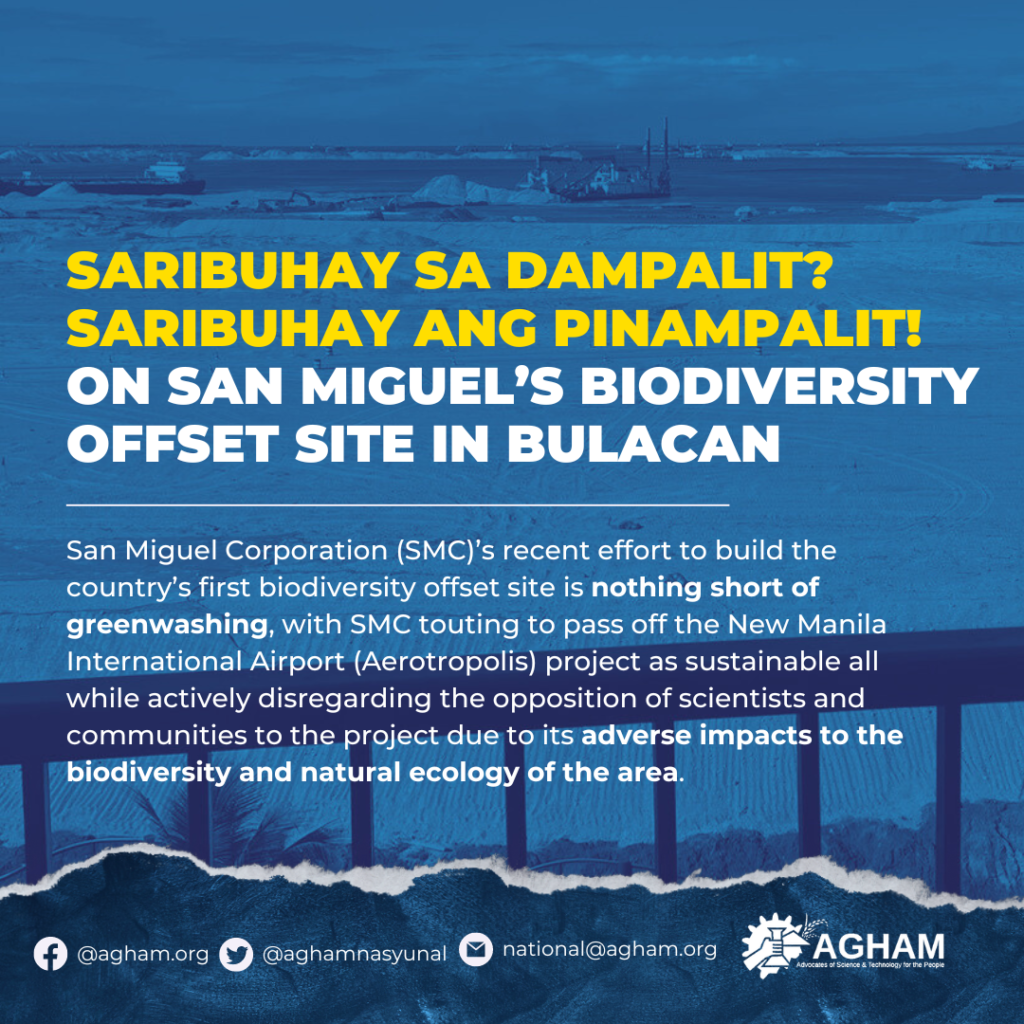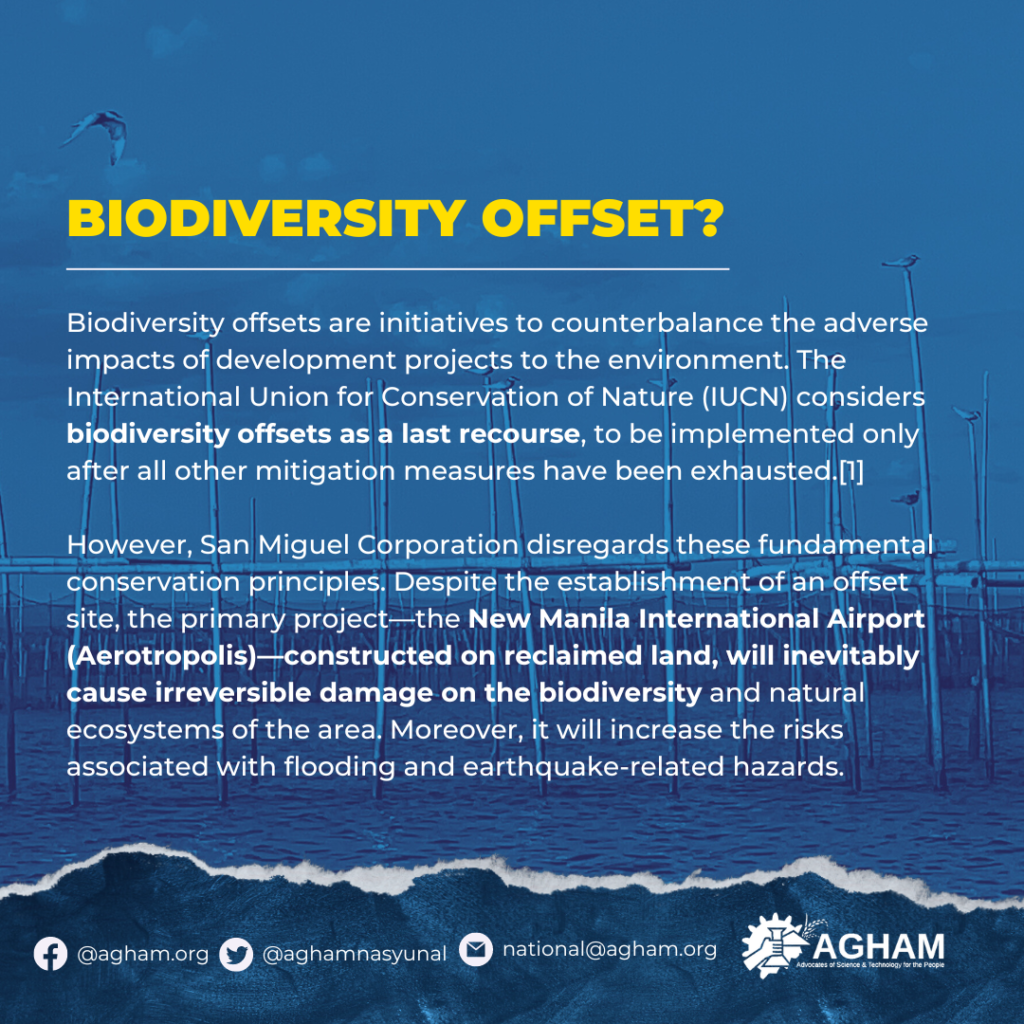
San Miguel Corporation (SMC)’s recent effort to build the country’s first biodiversity offset site is nothing short of greenwashing, with SMC touting to pass off the New Manila International Airport (Aerotropolis) project as sustainable all while actively disregarding the opposition of scientists and communities to the project due to its adverse impacts to the biodiversity and natural ecology of the area.

Biodiversity offsets are initiatives to counterbalance the adverse impacts of development projects to the environment. The International Union for Conservation of Nature (IUCN) considers biodiversity offsets as a last recourse, to be implemented only after all other mitigation measures have been exhausted.[1]
However, San Miguel Corporation disregards these fundamental conservation principles. Despite the establishment of an offset site, the primary project—the New Manila International Airport (Aerotropolis)—constructed on reclaimed land, will inevitably cause irreversible damage on the biodiversity and natural ecosystems of the area. Moreover, it will increase the risks associated with flooding and earthquake-related hazards.

The Aerotropolis project will destroy the rich biodiversity not only in its project site but in other farther areas as well. Built on reclaimed land in Manila Bay, the construction of the airport city has already caused damage to marine and coastal biodiversity in the area. The initial dredging and reclamation activities, in almost 2300 ha of wetlands, have caused waterbirds to decrease and natural breeding grounds of fish to be destroyed. It would take 25000 ha of new mangrove forests and wetlands to compensate for these damages. [2]

While biodiversity parks like Saribuhay sa Dampalit are important, they should not be a trade-off for the negative impacts of development projects. Although the incurred damages may be irreversible, the initial focus should be on minimizing ongoing harm by stopping all reclamation projects in Manila Bay and implementing a moratorium on new developments. Subsequently, a comprehensive cumulative impact assessment must be conducted to evaluate the collective damage caused by reclamation activities in the area.#
Sources
[1] https://www.iucn.org/resources/issues-brief/biodiversity-offsets
[2] https://www.globalwitness.org/en/campaigns/holding-corporates-account/runaway-risk/
0 Comments